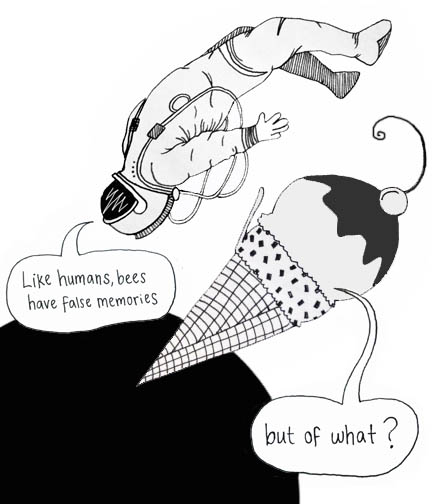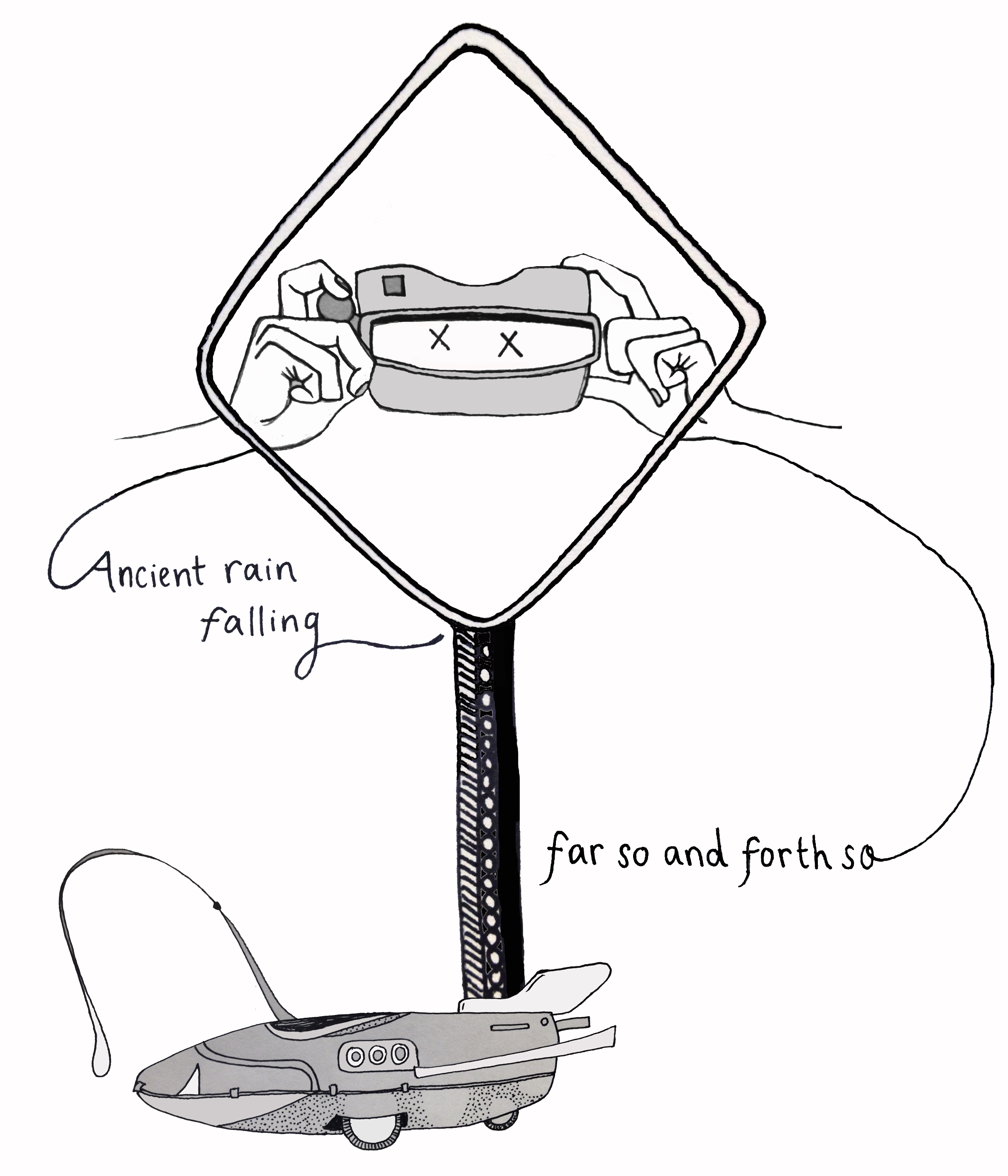Notes from the Field - AWP 1.5
Correspondant Rachel Kessler agreed to be our eyes-on-the-ground at the AWP festival this year. Join us for her daily updates as the conference unfolds. Comics here are from Gabrielle Bates, used with permission.

Trotting down Figueroa Street this morning I saw a young and healthy-looking woman crouched behind a concrete planter. Her head bent nearly between her legs, AWP lanyard flapping behind her in the wind like a terrified bird trying to escape, I noticed she was shaking. I approached, concerned — was she ill? had she fallen? — and saw her notes trembling in her hands. Her lips moved, either in prayer or rehearsal. This panic attack technique seemed to be working for her, as she appeared able to inhale and exhale her cigarette, so I let her be. I have assumed this same position before panels, and childbirth, and I did not need anyone touching my shoulder in a neighborly way in those moments. What I needed was the Emily Dickinson Quiet Space, open from 8:00 am to 5:30 pm in room 507, which I was not able to find.
I began the day at the book fair, where all of my favorite small presses offered extremely tempting discounts on books. Soon, my tote bag bristled with titles, digging painfully into my shoulder. It was time to sit down. Fortunately, there was an excellent and entertaining panel, “The Poetry of Comics,” featuring Bianca Stone, Alexander Rothman, and the multi-talented Seattleites Gabrielle Bates and Catherine Bresner.
“Come join us!” Bianca Stone began her reading with this invitation. You can watch Bianca Stone’s video of her poetry comic “Because You Love You Come Apart” here, but seeing this work in its original poem comic form is essential. She described her process as collaging great lines from poems that didn’t work, an exercise in editing. “Poetry comics are great for understanding your own work. Once you cut it out and stick it in a box, you can really see if that line fails,” she said. “Because You Love you Come Apart” begins with her rendering of an iconic Batman image. A few panels later the poem reminds us “but this is also your life made with your clumsy hands,” lettered in the speech bubble of a long-haired, suit-jacketed hot air balloon operator. Poetry comics, or “poïc cometry” as Alexander Rothman put it in his insightful manifesto, ask “what else can language and the visual do?” These poets and visual artists are not animating a poem. A grad student attending this talk inventively used eyeliner to outline her schedule while the poets read their poetry comics out loud and showed slides of these poem-comics. Gabrielle Bates showed “We Are All Arachnes.” She spoke about the visual creating its own thread, as this poem demonstrates:
I think about the act of weaving a lot
the body as both motion and yarn
but what is our loom?
The past?

Catherine Bresner read her erasure and digital collage poems. She writes in her poem comic “The Empty Season,” (published by BOATT journal) “I hate people who answer questions with answers / I would like to be a scientist of all things […] Please shut up for a minute / & look / the window washer fencing his sky double.” Suddenly there is an image of Susan Sontag lounging large on top of a bullet train. The poem concludes with a hand-drawn panel of a hand holding a card that reads “The End,” in the spirit of Mary Rueffle. Check out Ink Brick and Gigantic Sequins for more poetry comics.
Why does AWP continually underestimate attendees interest in panels that discuss hiphop? All 300 seats were filled, with many more sitting in aisles, standing in the back and crowding around the doors for the panel on “The Literary Genius of Kendrick Lamar.” Jostling outside the room, it was difficult to hear, but I caught snippets of Natalie Graham’s talk drawing parallels between Lamar’s “These Walls” and James Baldwin’s essay “Uses of the Blues” and novel “Giovanni’s Room” to discuss “the anarchic vitality of the human interior.” She summed up so much with this brilliant line: "so, journalists caught all the holy ghosts of Blackness when To Pimp a Butterfly came out."
The microclimates of AWP merit comment. Vast windowless rooms of sparsely attended readings are aggressively air-conditioned, requiring layering sweaters and jackets and scarves, while the smaller packed rooms were as hot as a summer Sunday in church, sweating writers knelt and beat conference planners against the warm air. It is essential to pack clothing for a 30 degree range of temperature. The absence of drinking fountains stood out in sharp contrast with the proliferation of cocktail bars within the conference center. Is this a feature of LA life?
Perhaps there is a gap in AWP’s awareness of pop culture, but the next panel I attended, “From Writing as Craft to Minecraft” was similarly humid and packed. The staid format of panels and readings in the overly florescent-lit conference center was upended by marketing-savvy presentations dripping with education-speak. One presenter, Mark German, a former teacher turned curriculum developer, blasted note-scribbling attendees with three video game trailers. Especially notable was Never Alone, a game made in collaboration with First Nation Alaskans, narrated in Iñupiaq with English subtitles, demonstrating a possible future for oral tradition. We go on a quest with an arctic fox, and on the way learn about the environment, culture and tradition of this place.The main thrust of this panel was pedagogical: engage students in video game creation, andvoila! they are collaborating and story-telling.
Back at the book fair, a booth promoted The Call Me Ishmael Phone, “a literary device that helps people celebrate and discover great books,” which is an old-timey-looking payphone-style receiver where users punch a button that triggers audio recordings of people describing a memory of their first encounter with a favorite book. What I really wanted at this point was an old fashioned phone booth to duck inside of and slide its door shut. Then a manual typewriter caught my eye, and I met a woman, Jacqueline Suskin, who composes poems for people on it. She calls this project Poem Store, and claims to make a decent living doing it. She does not keep copies of the poems she writes. Many years ago I co-founded a similar performance art collaboration with Sierra Nelson and Sara Paul Ocampo tapping out poems on demand, and we kept carbon copies of thousands of poems we’ve typed since 1998. I continue to be fascinated by the typewriter’s inky, percussive power and the work these machines inspire.